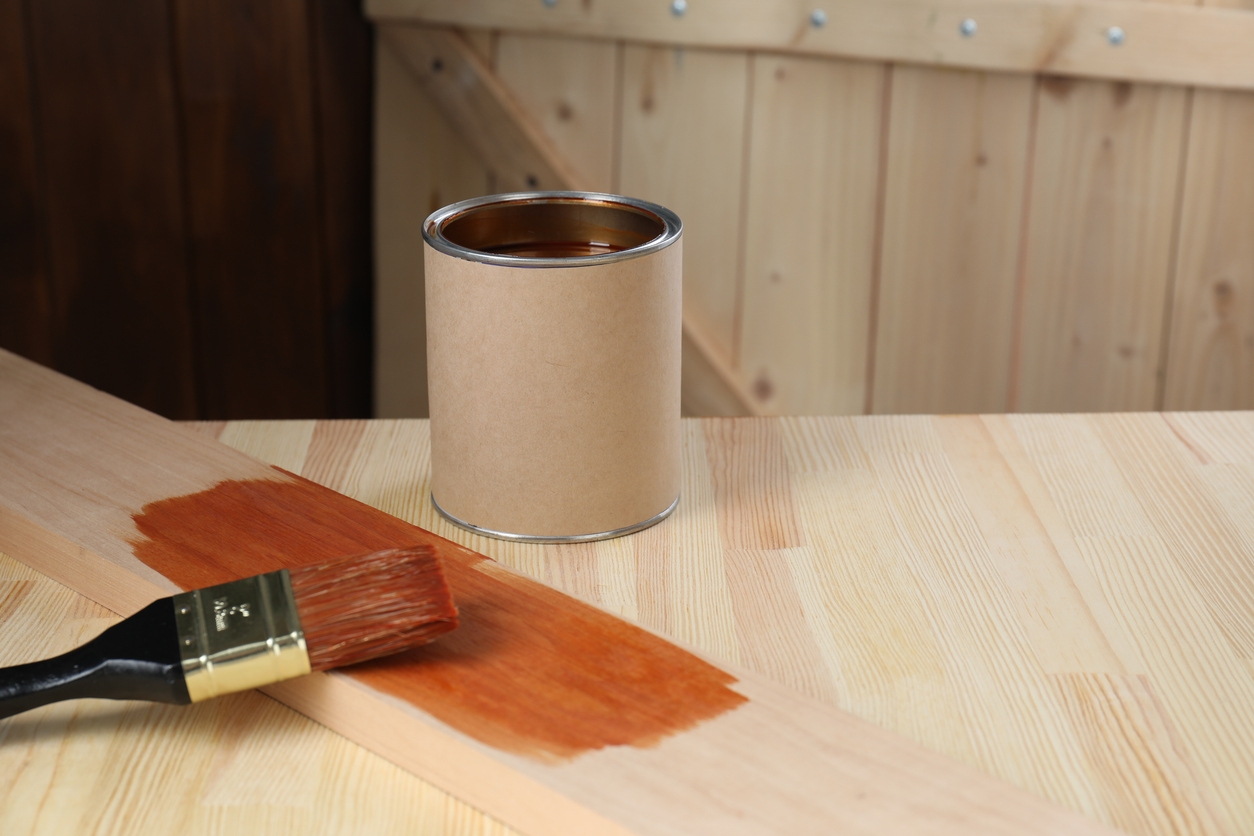Cedar siding is a popular choice for Pleasant Hill, CA homeowners due to its natural beauty, durability, and resistance to decay. However, to maintain its appearance and longevity, regular maintenance is crucial. This article aims to determine the ideal frequency for staining cedar siding, ensuring it remains protected and aesthetically pleasing.
Understanding Cedar Painting
Cedar is one of the popular wood choices for building materials. It can be made into anything, from sidings to decks. Let’s explore its characteristics, benefits, and aesthetic appeal.
Characteristics of cedar wood
- Durable: Naturally resistant to decay and rot.
- Aromatic: Possesses a distinct, pleasant scent.
- Lightweight: Easy to handle and work with.
- Stable: Low tendency to warp or shrink.
- Insulating: Provides good thermal and sound insulation.
Benefits of using cedar for siding
- Natural resistance: Inherently resistant to rot, insects, and moisture, reducing the need for chemical treatments.
- Durability: Long-lasting with proper maintenance, even in harsh weather conditions.
- Eco-friendly: Biodegradable and sustainably harvested.
Aesthetic appeal of cedar siding
- Natural beauty: Rich, warm tones and attractive grain patterns enhance visual appeal.
- Versatile: Can be stained, painted, or left to weather naturally to a silvery gray.
- Architectural versatility: Complements various architectural styles, from rustic to modern.
Why is Staining Important?
Staining wood is important for several reasons:
- Protection from weather elements (rain, snow, sun): Staining creates a barrier that helps shield the wood from moisture and UV rays, reducing the risk of warping, swelling, and fading.
- Prevention of wood decay and damage: By repelling water and inhibiting fungal growth, staining helps prevent rot and decay, ensuring the wood remains strong and durable.
- Enhancement of natural beauty: Staining enhances the natural grain and color of the wood, bringing out its inherent beauty and giving it a more polished and appealing look.
- Longevity of the siding: Proper staining extends the life of the wood by protecting it from environmental stressors and reducing the frequency of repairs and replacements.
Factors Affecting Staining Frequency
Cedar is one of the popular wood choices for building materials. Let’s explore its characteristics, benefits, and aesthetic appeal.
Characteristics of cedar wood
- Durable: Naturally resistant to decay and rot.
- Aromatic: Possesses a distinct, pleasant scent.
- Lightweight: Easy to handle and work with.
- Stable: Low tendency to warp or shrink.
- Insulating: Provides good thermal and sound insulation.
Benefits of using cedar for siding
- Natural resistance: Inherently resistant to rot, insects, and moisture, reducing the need for chemical treatments.
- Durability: Long-lasting with proper maintenance, even in harsh weather conditions.
- Eco-friendly: Biodegradable and sustainably harvested.
Aesthetic appeal of cedar siding
- Natural beauty: Rich, warm tones and attractive grain patterns enhance visual appeal.
- Versatile: Can be stained, painted, or left to weather naturally to a silvery gray.
- Architectural versatility: Complements various architectural styles, from rustic to modern.
General Guidance for Staining Frequency
Recommended frequency for different climates:
- Humid climates: Every 1-2 years. High moisture levels can cause wood to deteriorate faster, necessitating more frequent staining to protect it from mold, mildew, and water damage.
- Dry climates: Every 2-3 years. The lack of moisture can cause wood to dry out and crack, but the staining frequency can be slightly less than in humid climates.
- Moderate climates: Every 2-3 years. Balanced weather conditions can allow for a middle ground in terms of re-staining frequency.
Signs indicating it’s time to re-stain
- Fading color: When the wood’s color starts to look dull or faded, it’s a clear sign that the stain is wearing off.
- Peeling or flaking: If you notice the stain is peeling or flaking off, it means the wood is no longer protected.
- Water absorption: When water no longer beads up on the wood’s surface and instead soaks in, it’s a strong indicator that the wood needs to be re-stained.
Comparison between different types of stains
Transparent stains:
- Re-staining interval: Every 1-2 years.
- Characteristics: Provide minimal UV protection and enhance the natural beauty of the wood. They need frequent reapplication due to their low protection level.
Semi-transparent stains:
- Re-staining interval: Every 2-3 years.
- Characteristics: Offer better UV protection than transparent stains while still allowing some of the wood grain to show through. They strike a balance between protection and aesthetic appeal.
Solid stains:
- Re-staining interval: Every 3-5 years.
- Characteristics: Provide the highest level of UV protection and hide the wood grain. They last the longest but may eventually peel or flake.
By following these guidelines and observing the condition of your wood, you can maintain its appearance and longevity effectively.
Steps for Staining Cedar Siding
1. Preparation (cleaning, repairing, sanding):
- Cleaning: Wash the cedar surface to remove dirt, mildew, and other contaminants. Use a mixture of water and mild detergent or a wood cleaner.
- Repairing: Inspect the wood for any damage or rot. Replace or repair any damaged sections.
- Sanding: Sand for a smooth and even surface, helping the paint or stain adhere better.
2. Choosing the right stain:
- Select a high-quality stain designed for cedar. You can choose between semi-transparent, semi-solid, and solid stains depending on the desired look and level of wood grain visibility.
3. Application process:
- Apply the stain or paint using a brush, roller, or sprayer. Follow the manufacturer’s instructions for the number of coats and drying times. Ensure even coverage and address any drips or uneven areas immediately.
4. Safety tips and precautions:
- Ensure the work area is well-ventilated to avoid inhaling fumes.
- Wear protective gear (goggles, mask, gloves, etc.).
- Properly dispose of any rags or materials used, as they can be flammable.
These steps will help you achieve a beautiful and durable finish on your cedar surfaces.
Maintenance Tips
Here are some maintenance tips for cedar siding after painting:
- Regular inspections and touch-ups: Check for peeling paint, cracks, or other damage every six months. Touch up any areas with chipped or peeling paint promptly to prevent further damage.
- Cleaning techniques to prolong stain life: Clean the siding annually using a soft brush and mild detergent solution to remove dirt, mildew, and stains. Rinse thoroughly with water.
- Handling minor repairs: For minor cracks or splits, use exterior wood filler and sand it smooth before repainting. Replace any severely damaged boards to maintain the integrity and appearance of the siding.
Conclusion
Cedar is one of the most durable, beautiful, and popular wood siding, but be sure to care for it regularly to maintain attractive properties. Also be sure to inspect to see if you need to repair wood rot before starting the project.
Staining your cedar siding regularly offers numerous benefits. These include enhanced protection against weathering, increased longevity, and improved aesthetic appeal. Consistent maintenance ensures these advantages are sustained over time, preventing costly repairs and preserving your Lafayette, CA home’s beauty.
For expert care and optimal results, contact our professional team from Custom Painting, Inc. Today. Call us at 925-686-0903 or message us via our contact form when you seek professional paint advice or request an estimate. We always provide estimates free of charge!


